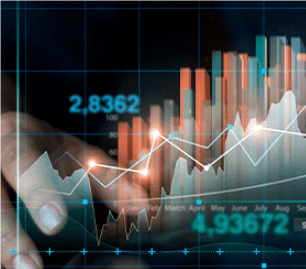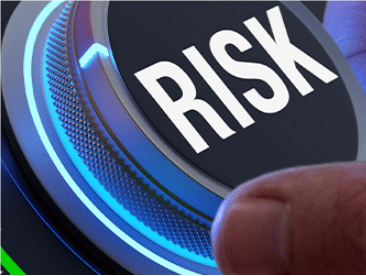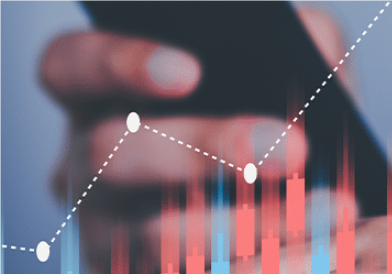
As a new trader, the world of online trading can seem very complex and hard to understand. A major reason for this is the use of unique financial terminologies. Having a good grasp of trading terminologies can come with plenty of benefits such as:
- You can learn and understand trading better.
- You can actively participate in trading forums/groups.
- You will be able to use trading resources effectively.
Trading is a skill that requires constant learning, and understanding trading lingo can help you become a better trader.
Here are 8 online trading terms every beginner should know:
1. Underlying Asset and Asset Classes
Traditionally, an asset is an economic resource that can be owned or controlled to generate a return. In the financial world, assets are what are exchanged when trading in the markets. So, if you own stocks of Apple or Facebook, you are essentially owning an asset that can be redeemed for its monetary value.
In the world of online trading, traders trade derivatives of underlying assets, and not the assets themselves. When you buy Bitcoin CFDs for instance, you are not taking possession of the digital coins, but instead, you are simply speculating on its price changes. If your price prediction is right, you earn profits; and if you are wrong, you incur losses.
Asset classes are broad groups of assets that have similar characteristics. At AvaTrade, for instance, you can trade instruments from financial asset classes such as:
- Forex Pairs
- Stocks
- Bonds
- ETFs (Exchange Traded Funds)
- Commodities
- Indices
- Cryptocurrencies
2. Going Long and Going Short
Going long is buying an asset with the expectation that prices will rise. A long position will generate profits if prices do indeed rise as expected. Traders go long under certain market conditions such as:
- Positive news or data impacting an underlying asset has been released.
- The market is in bullish mode (a market where prices are generally expected to rise).
- Prices are in a support area and expected to rise.
On the other hand, going short is selling an asset with the expectation that prices will fall. A short position generates profits if prices do indeed fall as expected. Some of the reasons to go short include:
- The market is in bearish mode (a market where prices are generally expected to fall).
- Prices are in a resistance area and expected to fall.
- Negative news or data impacting an underlying asset has been released.
3. Pips and Pip Value
Pips and pip value are essential trading terms for every beginner. A pip, which actually means ‘percentage in point’, is the smallest whole unit of measurement used to express a change in the value of an asset.
In Forex, for instance, most prices are quoted up to 4 decimal places. The last decimal place represents 1 pip. So, if the price of the EURUSD currency pair changes from 1.9010 to 1.9015, it is said that it has increased by 5 pips. Some platforms can quote fractional pips, which are known as pipettes. In other words, the price of an asset can change by, say, 5.2 pips.
When you open a trade, the profits you make or losses you incur will depend on the pip value as well as the number of pips the price changes by. For instance, you can open a position that is worth $10 per pip. If the price goes in your favour by 50 pips, you will earn a profit of $500 (50 pips*$10).
4. Bid, Ask, and Spread
These are the most basic trading terms that you must know. As you may have noticed, price quotes in online trading are usually expressed in pairs.
The Bid is the first price in the quote, whereas Ask is the second price. The Bid price is always lower than the Ask price. The Bid price is the price at which the broker or market buys the underlying asset. It is the price at which the trader sells.
The Ask price is the price at which the broker or market sells the underlying price. It is the price at which the trader buys.
Spread is the difference between the bid and ask price. Spread represents the cost of opening a trading position for the underlying asset. For instance, if an asset has a spread of 2 pips, and you open a trade position with a pip value of $10, then your trading cost will be $20.
5. Leverage and Margin
One of the biggest attractions of online trading is leverage. Leverage is a facility provided by online brokerage firms to allow traders to control positions that are much larger than their capital.
Leverage can be viewed as a type of “loan”, where the broker is allowing you to trade much larger positions with a smaller amount of capital, almost as if they are lending you the money.
Margin is the amount (of capital / your money) you need to put down to open and maintain a leveraged position in the market. Margin is usually expressed in percentage terms.
At AvaTrade, traders can trade with a leverage level of up to 400:1, depending on the asset class. This would mean that to control a $100,000 trade position in the market, you will only need to put just $250 of your own money. The margin requirement for such a trade position is, therefore, 0.25%.
While leverage is a great innovation in the world of online trading, all traders, especially beginners are always advised to use it carefully. This is because it can magnify your losses as much as it can boost your profits. Using the example above, if you lose a trade, you will owe the broker a lot more than just your initial $250.
6. Support and Resistance
Like in any market, prices of financial assets are determined by the forces of demand and supply. In online trading, it is support and resistance levels that highlight important areas where the forces of demand and supply interact.
Support is a level where the price of an asset repeatedly stops declining. It is essentially a level where demand outstrips supply and prices bounce back higher.
On the other hand, resistance is a level where the price of an asset repeatedly stops rising. It is an area where supply outstrips demand, and prices bounce back lower.
The logic is always to buy at support and sell at resistance. Support and resistance levels are very important in trading range-bound markets (prices don’t change much) and even breakouts (prices rise or fall substantially). When a support level is broken, it turns into resistance, and when a resistance level is broken, it turns into support.
7. Risk and Risk Management
These are two essential terms for any beginner trader and all traders. Whenever you trade, there is always the element of risk and reward. Risk refers to the possibility of your trades resulting in a loss, whereas reward is the exposure to potential profits.
Some of the risks you are exposed to when trading online include:
- Price slippages – Sudden price movements that usually happen during high volatility, where the price you placed the order at and when the trade is executed by the broker may fluctuate and differ. This might work in your favour or against you.
- Volatility risk – The degree by which an asset price changes within a period. Prices can swing higher or lower very quickly. In a low-volatility market, the price movements are smoother and less extreme.
- Gap risk – This refers to a situation where the asset’s price falls dramatically within a short amount of time, usually it is fueled by news or market events.
- Liquidity risks – Liquidity refers to how easily an asset can be converted into cash. The number of people trading will determine the liquidity. If there are lots of buyers, it will be easier to sell the asset, i.e., there is high liquidity.
Risks will generally lead to limited returns or losses. Risk management is the use of various strategies to minimize or control the risks you are exposed to when trading online. Some of the strategies traders use to manage risks include:
- Using conditional orders like Stop-Loss and Take-Profit.
- Diversifying their portfolio with different assets.
- Hedging by opening other trades that could potentially offset losses.
- Using low leverage to prevent large losses.
8. Technical and Fundamental Analysis
Technical analysis and fundamental analysis represent the main approaches that traders use to determine when to buy or sell their financial assets.
Technical analysis is the study of historical price action in an attempt to predict potential future price behaviour. A technical analyst believes that prices move in patterns that can be identified and taken advantage of. The main tools for technical analysis are price charts such as candlestick charts, and mathematical indicators such as oscillators.
On the other hand, fundamental analysis is the study of social, economic and political factors that have an impact on the value of an underlying asset. The idea is to establish the true intrinsic value of an asset.
If an asset is deemed overvalued, it means that its prices will likely go lower; whereas an undervalued asset will be expected to increase in price. One of the best tools for fundamental analysis in online trading is the Economic Calendar, which gives a schedule of news and events that may have an impact on the values of various underlying assets.



